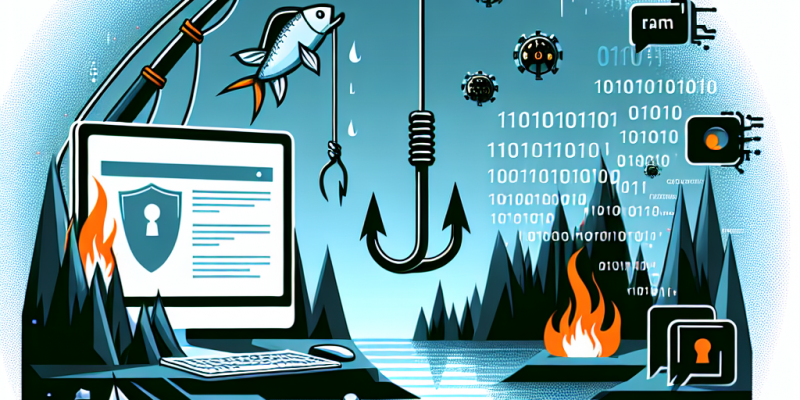From Phishing to Ransomware: Decoding Today’s Cyber Threat Landscape

In today’s digital age, the threat landscape is evolving at an unprecedented pace. With the rapid advancement of technology, cybercriminals are employing increasingly sophisticated tactics to exploit vulnerabilities in systems and human behaviors. This article delves deeper into the current cyber threat landscape, spotlighting key threats like phishing and ransomware, and offering insights into how individuals and organizations can fortify their defenses.
The Rise of Phishing Attacks
Phishing remains one of the most prevalent cyber threats, accounting for a significant portion of data breaches and identity theft incidents. Cybercriminals craft deceptive emails and messages that masquerade as legitimate communications from trusted entities, enticing victims to disclose sensitive information or click malicious links.
Key Trends:
-
Spear Phishing: Unlike traditional phishing that targets broad groups, spear phishing is highly targeted. Attackers often do extensive research on their victims, personalizing communications to increase the likelihood of success.
-
Use of Legitimate Platforms: Increasingly, attackers are leveraging trusted platforms such as Google, Microsoft, or even social media to conduct phishing. This tactic adds a veneer of legitimacy, making it harder for victims to identify red flags.
-
Business Email Compromise (BEC): BEC scams have seen a drastic rise, where attackers impersonate executives within organizations to manipulate employees into transferring funds or sensitive data. The FBI reported that BEC scams had resulted in billions in losses over recent years.
The Surge in Ransomware
Ransomware threats have escalated significantly, becoming one of the most devastating forms of cyberattacks for organizations. In this scenario, attackers encrypt a victim’s data and demand a ransom for the decryption key. The fallout from such attacks can be catastrophic, leading to substantial financial losses and reputational damage.
Key Trends:
-
Double Extortion: Attackers now frequently employ double extortion techniques, where they not only encrypt data but also steal it, threatening to release sensitive information if the ransom isn’t paid.
-
Targeting Critical Infrastructure: High-profile attacks on critical infrastructure sectors, including healthcare, energy, and transportation, have brought ransomware into the public eye. Such attacks can have serious implications, affecting essential services.
-
Ransomware-as-a-Service (RaaS): The emergence of RaaS has democratized ransomware attacks, allowing even unsophisticated criminals to launch attacks with relative ease. Interested parties can rent ransomware software from developers in exchange for a portion of the ransom.
Defensive Strategies
As cyber threats become more sophisticated, it is crucial for individuals and organizations to adopt comprehensive security measures to mitigate risks.
Best Practices:
-
Employee Training: Regular training sessions that help employees recognize phishing attempts and educated them about safe online practices can significantly reduce susceptibility to attacks.
-
Email Filters and Multi-Factor Authentication (MFA): Implementing advanced email filtering solutions can help identify and block phishing attempts. Coupled with MFA, these measures provide an additional layer of security.
-
Regular Backups: For ransomware threats, regularly backing up data can mitigate the impact of an attack. Ensure backups are stored securely and are not connected to the network, preventing them from being targeted during an attack.
-
Incident Response Plan: Having a well-documented incident response plan ensures that organizations can respond swiftly and effectively in the face of a cyber incident, minimizing damage and recovery time.
Conclusion
The cyber threat landscape is dynamic and fraught with challenges, with phishing and ransomware being at the forefront. As cybercriminals continue to evolve their tactics, proactive cybersecurity measures must be a top priority for individuals and organizations. By staying informed about the latest trends and implementing robust security practices, we can better protect ourselves and our data in this increasingly interconnected world.
Understanding and mitigating cyber threats is not just the responsibility of IT departments; it requires a culture of cybersecurity awareness across all levels of an organization. The fight against cybercrime is ongoing, and vigilance is our best defense.














